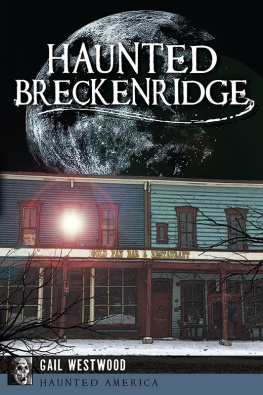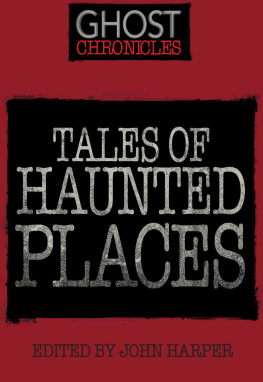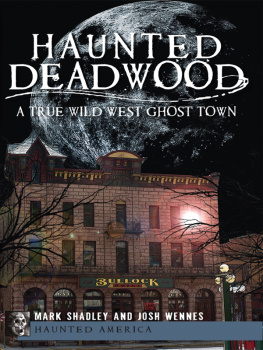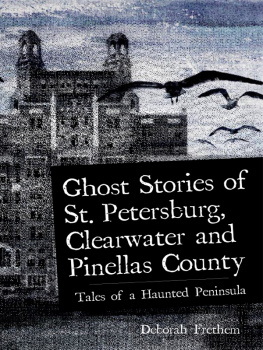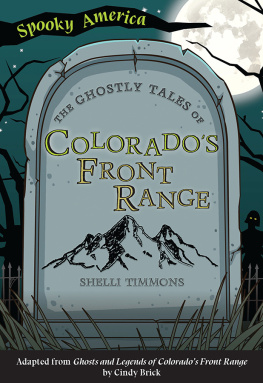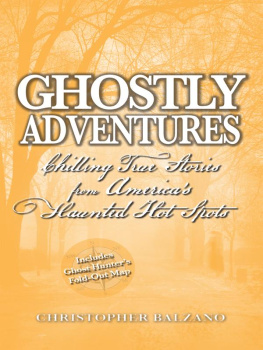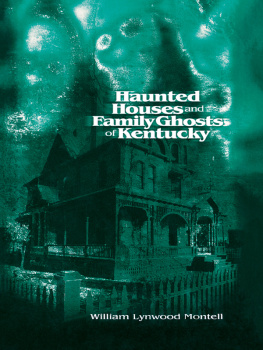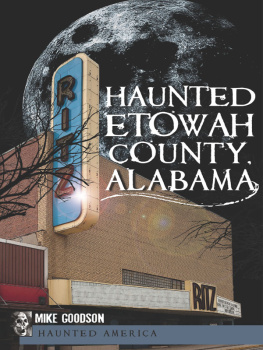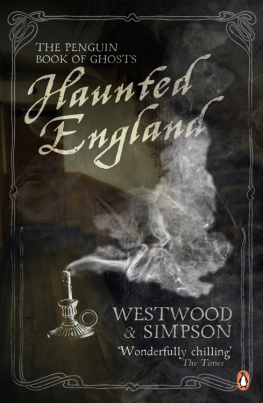

Published by Haunted America
A Division of The History Press
Charleston, SC 29403
www.historypress.net
Copyright 2015 by Gail Westwood
All rights reserved
First published 2015
e-book edition 2015
ISBN 978.1.62585.387.5
Library of Congress Control Number: 2015941434
print edition ISBN 978.1.62619.830.2
Notice: The information in this book is true and complete to the best of our knowledge. It is offered without guarantee on the part of the author or The History Press. The author and The History Press disclaim all liability in connection with the use of this book.
All rights reserved. No part of this book may be reproduced or transmitted in any form whatsoever without prior written permission from the publisher except in the case of brief quotations embodied in critical articles and reviews.
CONTENTS
PREFACE
Long before the first prospectors found gold in the mountains and rivers of Summit County, Colorado, the area was occupied by far more unusual occupants. The first evidence uncovered was the remains of a tusk that belonged to a mastodon, a prehistoric animal that looked like a cross between an elephant and a mammoth. They had longer bodies and shorter legs than the mammoth, with long, curved tusks. These animals roamed North America more than ten thousand years ago and eventually became extinct. When this discovery was made by a couple of Breckenridge prospectors in 1861, their interests were not in archaeology but in digging a ditch to supply water to aid their efforts to find gold. Luckily, the local judge was more excited about the find and sent it in to the Rocky Mountain News in Denver, where it was more appreciated.
Another accidental discovery was made later in that decade by another miner. While searching for gold in the foothills near Breckenridge, he uncovered a skeleton that had turned to stone. It was an unusually large seven-foot-tall man. He was found surrounded by hefty and dangerous war weapons. This story was reported in Summit Countys first ever newspaper, the Summit County Times (but was never followed up).
The peace-loving Ute Indians were the first people that researchers know for certain inhabited this valley as far back as 6,500 years ago. They were a nomadic people who were attracted to the beautiful Blue River valley and made it their summer hunting ground. They called it by the name of Nahoon-kara. Although there is no official translation into English, it is believed that it refers to the river of blue that rises from the ground.
Around two hundred years ago, what is now Summit County seemed to be created for the hunter. Animals of all kinds roamed this area in vast numbers. No sooner had a man raised his rifle than a bear, elk, buffalo, deer, beaver, sheep or rabbit would pop into sight. This, of course, was also the attraction for the next group of people who invaded the areatrappers.
Starting with Ezekiel Williams, the first known explorer to make his way to Colorado to hunt in 1811, explorers from all different backgrounds followed in large numbers. Although the variety of wildlife was immense, they set their eyes on the biggest prize. They believed that one animal in particular was going to make their fortunes. To wear a beaver hat in the early 1800s was the height of fashion, and this item also kept men warm in cold temperatures. These trappers lived peacefully with the Utes but didnt welcome the gold seekers who might interfere with their hunting activity. These men were very good at keeping a secret, though. They knew all about the gold that was sitting in the rivers around here but werent prepared to share that information with the gold diggers and have them scare all the animals away!
Thirty years after the start of the beaver craze, a new fashion took over in hatssilk. That wasnt a material that was available to them, so in time the trappers took off to find a different way of making a living.
That left the way clear for the gold hunters to overrun the hills and valleys of Blue River, and thats exactly what they did. Explorers like Major Zebulon Pike and Colonel Fremont made people more aware of the West, but it was the financial panic in the East in 1857 that caused an influx of men to search for a new way of making their fortunes after losing everything they owned in the crash.
Twenty years after the first gold boom in 1859, silver was added to the riches to be mined, and towns like Breckenridge, Frisco and Montezuma moved into a different phase. Respectability took over in 1880 and the towns were built to display the wealth that now existed. To add to the mix of miners, prostitutes and merchants who had only come here to mine the miners (i.e., to charge exorbitant prices for basic mining equipment and other services), there were now Victorian ladies and gentlemen arriving in town. Instead of crudely built log cabins, they constructed elegant homes for themselves whose walls were lined with wallpaper and in which they entertained one another with society meetings, dinner parties and polite card games such as euchre and whist. They had printed calling cards that they left on one anothers silver platters when the host was away from home. They built churches to worship in and halls for formal dances, and they frowned upon the rough-and-ready men and women who had established the town. They sought to rid the town of establishments such as the saloons and were inspired by the teachings of the Temperance Society.
Mining lasted eighty-three years in total, and when it was over, the surrounding land of Summit County was destroyed. The Utes would not have believed their eyes if they had returned in the late 1940s to see the devastation that the miners had caused and left behind without any attempt at cleaning up. There were rock piles where there used to be a river, the hillsides were eroded from the hydraulic mining and the mountains were riddled with spoil heaps and holes in the ground that resembled the surface of the moon.
After a brief period of inactivity in which Breckenridge almost became a ghost town through lack of industry, a new gold took over in 1961 and made new fortunes for a different kind of prospector. Skiing became the new industry and changed the face of the hillsides forever.
It is no wonder that the spirits of these former inhabitants roam the local area and the homes in which they used to reside.
ACKNOWLEDGEMENTS
Thanks to The History Press for giving me the opportunity to write my first book. I would especially like to thank Stephanie Waters of Blue Moon Haunted History tours of Manitou Springs without whose inspiration this book would never, ever have been written! Thanks also to my daughter Holly for her invaluable help as photographer and critic.
This book would not have been possible without help from the following people: Maureen Nicholls, Karen Musolf, Mary Ellen Gilliland, Susan Gilmore, Susan Donaldson, Jan Thomas and Robin Theobald. Thanks also to the following publications: Summit County Journal, Summit Daily News, Denver Post and the Fairplay Flume.
The following books were invaluable for research: Blasted Beloved Breckenridge, by Mark Fiester; Summit, by Mary Ellen Gilliland; Summit Courthouse, by Susan Donaldson; My Breckenridge, by Raymond McGinnis; Rascals, Scoundrels and No Goods, by Mary Ellen Gilliland; Behind Swinging Doors, by Sandie Mather; Breckenridge: 150 Years of Golden History
Next page
